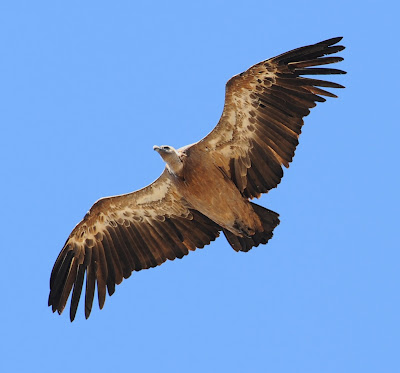Had a quick wander round the extended garden first thing and was greeted with 50+ Bee-eaters moving east, also a few Red-rumped Swallows and Serins.
Next stop Sierra de la Plata just in case there were still a few White-rumped Swifts about which apparently there had been the day before, but not today. Nevermind lets get some Vulture photos.
Smart youngster
Tatty older bird (dont ask me how old)
Juv Sparrowhawk with blunt wings and more irregular breast pattern.
Lots of Black Kites were also moving along with a few Short-toed Eagles. As there was quite a lot going on didnt look too much at the Black Kites but this photo shows that some of the birds were surprisingly rufousy underneath. The streaky one furthest left is presumably a young bird.
Upperpart shots are a bit of a premium so slightly less quality photos are acceptable!
This birds moult stage can be seen quite clearly (may have to click to enlarge)
It has got new inner primaries up to P6 with P7 very short and P8-10 old and brown.
















